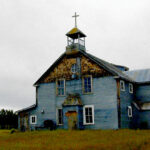Pornography
Christians are fighting back as leftists normalize obscene material
By Jonathon Van Maren
As our culture moves further into the post-Christian age, debates on how Christian families can respond are myriad, from Rod Dreher’s The Benedict Option to Al Mohler’s The Gathering Storm. Writers from different religious traditions disagree on precisely what Christian engagement might look like as Christians live out their faith in a society increasingly hostile to their values—but on one thing, everyone unanimously agrees: Do not send your children to public schools.
I’ve spent several years detailing the many reasons to avoid state schools in this space, and the list only grows longer with each passing month. First it was the expunging of Christian values; then it was the increasingly anti-Christian position of the schools; then it was the secular sex education that resembled grooming more than learning. Then it was the wholesale introduction of the LGBT agenda to children at the youngest ages, and the resulting explosion of kids identifying as different genders. Perversion and confusion are now mandated government curriculums everywhere.
Recent testimony by Karen England, the executive director of the Capitol Resource Institute, highlights this once again. England testified before the Tennessee legislature’s Education Committee, advocating for a bill aiming to have pornography removed from the libraries of government schools. England’s testimony was graphic, disturbing, and eye-opening:
Unfortunately, England is not exaggerating—the situation is worse. Many of the pornographic materials she describes are already in state school libraries, and many of them are already being utilized as “educational material” in classrooms. According to the CRI, more than forty states have “exempted public schools and public-school libraries from the laws that prohibit distribution of obscene material to a minor” and “lawmakers have eliminated any liability associated with these graphic materials if they are used for ‘educational’ purposes, as part of courses of instruction and/or in libraries in K-12 schools.”
READ THE REST OF THIS COLUMN HERE








